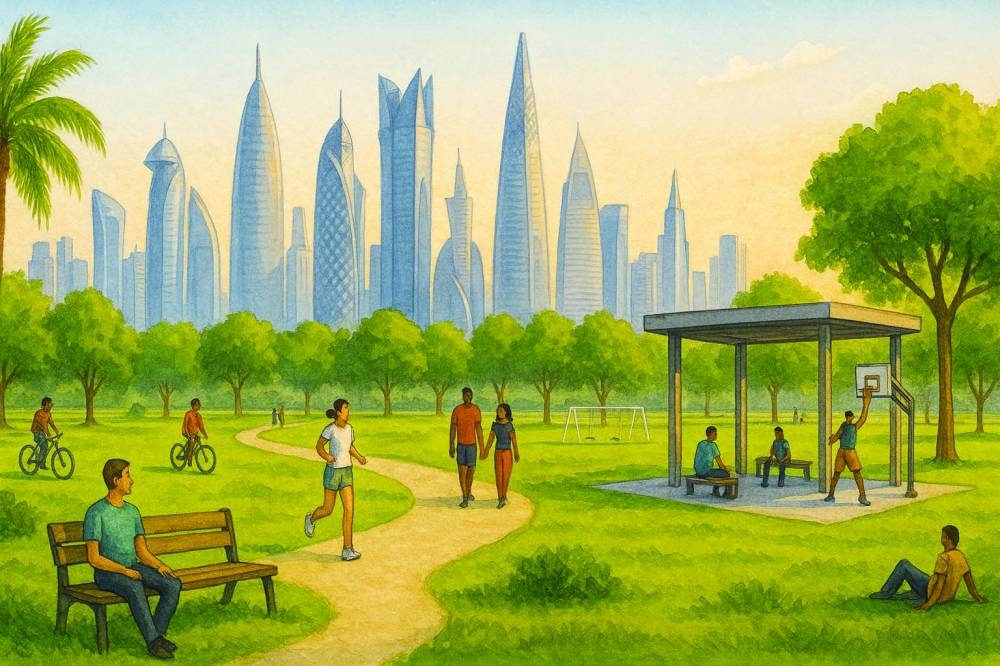Qatar, a nation renowned for its dynamic urban growth, rapidly evolving infrastructure, and rich cultural heritage, is also making a name for itself through its exceptional commitment to enhancing the quality of life for its residents and visitors. One of the most striking manifestations of this commitment is the development of lush public parks and vibrant recreational areas, which have transformed the country into an oasis of relaxation and recreation in the heart of the Middle East.
Across the country, Qatar’s parks offer a serene escape from the fast-paced urban life. Among these green sanctuaries, Aspire Park and Al Bidda Park stand as iconic symbols of the country’s dedication to sustainability and community well-being. Aspire Park, one of the largest and most celebrated parks in Doha, spans over 88 hectares of lush greenery, offering visitors a variety of recreational opportunities. From walking paths and cycling tracks to tranquil lakes and vast lawns, Aspire Park provides a comfortable environment for one and all.
Al Bidda Park, another gem in Qatar’s collection of green spaces, is located in the heart of Doha. This park, with its extensive walking trails, playgrounds, and recreational areas, has become a popular destination for families and tourists alike. Designed with both aesthetics and functionality in mind, Al Bidda Park is a place where visitors can enjoy picnics, take leisurely strolls, or engage in outdoor activities in a clean, safe, and welcoming environment.
In addition to these iconic parks, Qatar’s broader recreational landscape offers numerous spaces that cater to diverse interests and activities. The nation has prioritised the creation of cultural and recreational centres that serve as cultural hubs for the local community and visitors from around the world. Katara Cultural Village, for instance, is a prime example of how Qatar has fused culture and recreation. The village hosts a wide range of cultural events, including art exhibitions and theatrical performances.
The integration of modern amenities with natural beauty is a defining characteristic of Qatar’s urban planning philosophy. Throughout the country, recreational complexes are strategically located near public parks, ensuring that residents and visitors can easily access both recreational and cultural experiences. This seamless transition between nature and culture underscores Qatar’s holistic vision for urban living — a vision that strives to strike a balance between physical well-being and cultural enrichment.
This vision of integrating natural beauty with modern infrastructure is especially evident in Qatar’s development of outdoor leisure spaces that cater to a wide range of interests. Beyond the parks and cultural villages, Qatar has invested in waterfront promenades, beachfront areas, and family entertainment zones, all designed to offer relaxing escapes while promoting a healthy, active lifestyle. These spaces not only provide scenic views of the Arabian Gulf but also feature a range of activities.
Furthermore, the nation’s commitment to sustainability is evident in the way these parks and recreational areas are designed and maintained. Sustainability is at the core of Qatar’s urban development, and its parks and recreational spaces are no exception. Parks like Aspire and Al Bidda feature energy-efficient lighting, water-conserving irrigation systems, and the use of native, drought-resistant plants that help conserve water and reduce maintenance costs.
Qatar’s dedication to public parks and recreational spaces is more than just an urban development strategy; it is an investment in the health and well-being of its people. These spaces foster community interaction, mental well-being, and physical fitness, offering individuals of all ages the opportunity to engage with the outdoors in meaningful ways. Whether through a leisurely stroll, a vigorous workout, or a cultural performance, Qatar’s public spaces encourage a sense of connection and harmony within.
In conclusion, Qatar’s commitment to creating world-class public parks and recreational areas is a clear reflection of its progressive approach to urban living. These spaces provide more than just places for leisure; they are integral to the nation’s vision of a high-quality, balanced lifestyle that places equal emphasis on physical health, cultural engagement, and environmental sustainability. As Qatar continues to invest in and expand its public parks, it is setting a global standard for how cities can be planned to provide healthy living.
By focusing on the integration of nature, culture, and modern amenities, Qatar is well on its way to becoming a model for other cities worldwide — proving that a city can thrive while still maintaining a deep connection to the environment and providing spaces for its people to relax, recharge and grow.

